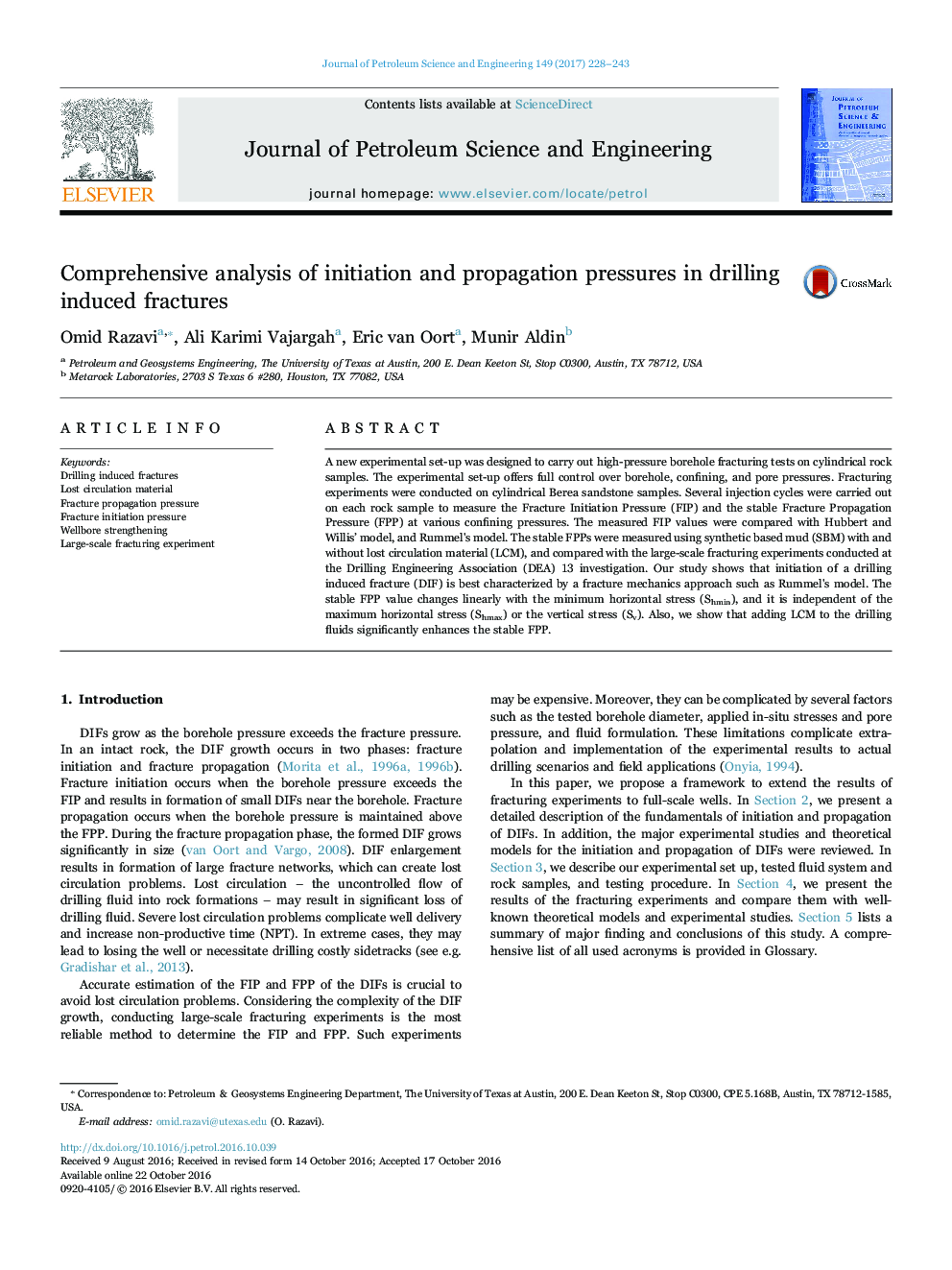| Article ID | Journal | Published Year | Pages | File Type |
|---|---|---|---|---|
| 5484467 | Journal of Petroleum Science and Engineering | 2017 | 16 Pages |
â¢Initiation of drilling induced fractures is accurately characterized by a fracture mechanics approach, such as Rummel's model.â¢Propagation of drilling induced fractures occurs in two stages: transient and stable.â¢The fracture propagation pressure reaches a constant value during the stable stage.â¢The stable fracture propagation pressure is primarily dominated by the minimum horizontal stress.â¢Application of lost circulation materials enhances the stable fracture propagation pressure.
A new experimental set-up was designed to carry out high-pressure borehole fracturing tests on cylindrical rock samples. The experimental set-up offers full control over borehole, confining, and pore pressures. Fracturing experiments were conducted on cylindrical Berea sandstone samples. Several injection cycles were carried out on each rock sample to measure the Fracture Initiation Pressure (FIP) and the stable Fracture Propagation Pressure (FPP) at various confining pressures. The measured FIP values were compared with Hubbert and Willis' model, and Rummel's model. The stable FPPs were measured using synthetic based mud (SBM) with and without lost circulation material (LCM), and compared with the large-scale fracturing experiments conducted at the Drilling Engineering Association (DEA) 13 investigation. Our study shows that initiation of a drilling induced fracture (DIF) is best characterized by a fracture mechanics approach such as Rummel's model. The stable FPP value changes linearly with the minimum horizontal stress (Shmin), and it is independent of the maximum horizontal stress (Shmax) or the vertical stress (Sv). Also, we show that adding LCM to the drilling fluids significantly enhances the stable FPP.
